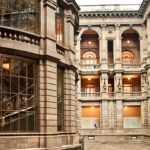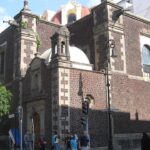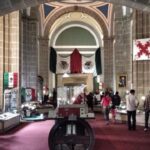
The Telegraph Museum (Museo del Telégrafo) opened in 2006. The main objective is to present and understand the history of telecommunications in Mexico. The museum shares a building with the National Museum of Art. This is appropriate as the building came into being as the National Palace of Communications.
One of the first countries in the world to widely use the telegraph, the history begins in 1849. Instant communications became an essential tool for governments and companies with interests across broad geographical spaces. In the digital era of media and communication, it’s interesting to go back to the basics. Imagine your own life without a mobile phone and you begin to see the situation of Mexican people communicate across broad landscapes in the 19th and 20th centuries.
The Telegraph Museum offers free admission and it’s in the midst of many other attractions. The entirety of Calle Tacuba attractions can be seen here.
 +52 (55) 5510 2370
+52 (55) 5510 2370
 https://www.facebook.com/Museodeltelegrafo/
https://www.facebook.com/Museodeltelegrafo/

0.04 kms.

0.05 kms.

Nearly unique in the Metro System, there's one Metro Station that just feels like it's in some other city. It's a front door for Calle Tacuba.

The Tacuba Street Library of the Mexican Congress itself is housed in the fascinating old Poor Clare's Convent.

One of the most painstakingly restored 17th century complexes in the City, MIDE tackles a tough subject with style.

One of the most easily historical corners in the city center, it's a monument, a garden and much more.

The old church of the Bethlemites today houses the original Museum of the Army and Air Force.